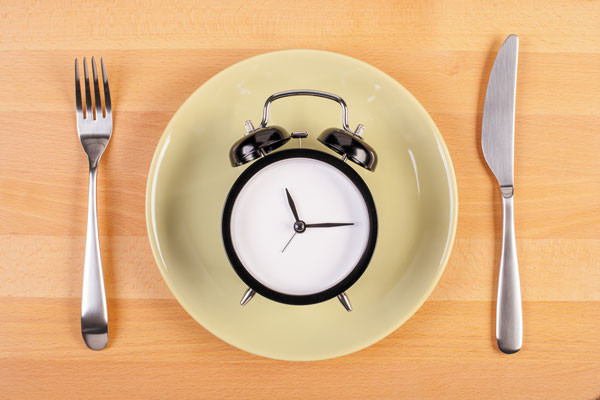
5 timeless habits for better health

What are the symptoms of prostate cancer?

Is your breakfast cereal healthy?

When pain signals an emergency: Symptoms you should never ignore

Does exercise give you energy?

Acupuncture for pain relief: How it works and what to expect

How to avoid jet lag: Tips for staying alert when you travel

Biofeedback therapy: How it works and how it can help relieve pain

Best vitamins and minerals for energy

Should you take probiotics with antibiotics?
Diet & Weight Loss Archive
Articles
Rx for longer life: Maintain healthy habits
It appears that the risk of an early death falls with each additional healthy lifestyle behavior that is maintained, even in people who are overweight.
5 habits that foster weight loss
Paying attention to your eating habits and other lifestyle routines can help nudge down the number on the scale.
Image: © Rawpixel Ltd/Thinkstock
If you're like many Americans, you're still carrying an extra pound or two that you gained over the holidays. Over the years, that extra weight can really add up—and that added girth is hard on your heart.
Often, the hardest part about losing weight isn't about knowing what to eat. You've heard it a thousand times: eat lots of vegetables, fruits, whole grains, and lean protein. The real challenge is changing your habits to make those healthy choices part of your everyday routine without feeling too deprived.
When You Visit Your Doctor - Lactose Intolerance
Lactose Intolerance
Questions to Discuss with Your Doctor:
- Do you have rumbling abdominal sounds after eating milk products?
- Do you get abdominal cramps, bloating, or diarrhea after eating milk products?
- Can you tolerate small amounts of milk?
- Do your symptoms improve when you eliminate milk products from your diet?
Your Doctor Might Examine the Following Body Structures or Functions:
- Careful abdominal exam
- Rectal exam
Your Doctor Might Order the Following Lab Tests or Studies:
- Trial of elimination of milk products from the diet
- Hydrogen breath test
- Lactose tolerance test
The dangers of the herb ephedra
After the death of Baltimore Orioles pitcher Steve Bechler more than 10 years ago, many questions arose about the safety of ephedra and the government's role in regulating the herb. Bechler died of heat stroke while taking ephedra, which occurs naturally in the Chinese herb ma huang. The speed-like drug contains the chemical ephedrine, an amphetamine-like compound closely related to adrenaline. Athletes and average people alike started taking ephedra when word started spreading about its ability to aid weight loss and increase energy and alertness.
But just because a supplement comes from natural sources doesn't make it safe. Ephedra can cause a quickened heartbeat and elevated blood pressure. Side effects include heart palpitations, nausea, and vomiting. More than 800 dangerous reactions have been reported with use of the herb. These include heart attacks, strokes, seizures, and sudden deaths. According to a study in the Annals of Internal Medicine, ephedra products make up only 1% of herbal supplement sales in the U.S., but they are responsible for 62% of herb-related reports to poison-control centers.
Harvard researchers renew warnings about saturated fat and heart disease
Higher intake of saturated fats is associated with a 24% greater risk of coronary artery disease. Replacing 1% of those fats with the same amount of calories from unsaturated fats, whole grains, or plant proteins appears to reduce the risk of coronary artery disease.
Any benefits to intermittent fasting diets?
Ask the doctor
Image: bopa/Thinkstock
Q. I have read about diets that involve fasting for one day, followed by normal eating for the rest of the week. Are there any benefits to this kind of diet??
A. Most diets achieve weight loss through the same equation—a reduction in total daily calories consumed in relation to the calories needed to maintain your weight.
Should I restrict calories for longevity?
Some potential medicines appear capable, in animals, of producing the same changes in body chemistry that calorie restriction does.
Where the worst type of fat is hiding in supermarket foods
Trans fats are undeniably bad for health, and they're still in many foods.
Image: GPointsStudio/Thinkstock
Lurking on supermarket shelves, within colorful, seemingly harmless packages, is something that can cause serious harm to your health: trans fat. "No amount of trans fat is acceptable, from a health standpoint," says registered dietitian Kathy McManus, director of the Department of Nutrition at Harvard-affiliated Brigham and Women's Hospital.
About trans fat
Still a danger
Meanwhile, food manufacturers are allowed to use partially hydrogenated oils in their products, and so are restaurants. And if you're not savvy about reading Nutrition Facts labels, you may not detect the trans fat in your food. "The FDA doesn't require trans fat to be listed until there's a half gram or more per serving," explains McManus, "so the label may show zero grams of trans fat, even if a serving contains almost half a gram."
Are small amounts of trans fat dangerous? "It adds up, especially if you eat several foods with trans fat each day," says McManus. Based on FDA estimates, researchers at the CDC report it is possible that eliminating trans fats in the diet may prevent as many as 10,000 to 20,000 heart attacks and 3,000 to 7,000 deaths from heart disease each year.
Become a detective
What about other fats?
All fat is high in calories (nine calories per gram of fat, versus four calories per gram of carbohydrate, for example). A high-calorie diet can lead to weight gain, which can lead to chronic health problems.
An excess of saturated fats (such as those found in whole milk, butter, and red meat) can increase "bad" LDL cholesterol and lead to heart disease. Limit saturated fats to less than 7% of your total daily calories or less than 12 grams in a 1,500-calorie diet.
Some fats, within calorie limits, are good for you. Such "good" fats include monounsaturated fat (such as those in olive and canola oils, most nuts, peanut butter, and avocados) and polyunsaturated fat (for instance, in salmon, mackerel, walnuts, and safflower oil). Both are associated with lower LDL cholesterol and total cholesterol when substituted for saturated fats.
Surprising sources of trans fat that list 0 grams on the Nutrition Facts label | ||
Product type | Brand | Identifying ingredient |
Frozen fish fillets | Sea Cuisine Potato-Crusted Cod | Partially hydrogenated soybean oil |
Coffee drink mix | Hills Bros. Double Mocha Cappuccino | Partially hydrogenated coconut oil |
Breakfast cereal | Kellogg's Apple Jacks | Partially hydrogenated soy-bean and/or cottonseed oil |
Seasoned bread crumbs | Vigo | One or more partially hydrogenated oils (soybean, cottonseed, corn, canola) |
Weight training may boost brain power
Weight training improved mental performance in a study of 100 men and women ages 55 through 86 who had mild cognitive impairment.

5 timeless habits for better health

What are the symptoms of prostate cancer?

Is your breakfast cereal healthy?

When pain signals an emergency: Symptoms you should never ignore

Does exercise give you energy?

Acupuncture for pain relief: How it works and what to expect

How to avoid jet lag: Tips for staying alert when you travel

Biofeedback therapy: How it works and how it can help relieve pain

Best vitamins and minerals for energy

Should you take probiotics with antibiotics?
Free Healthbeat Signup
Get the latest in health news delivered to your inbox!
Sign Up







